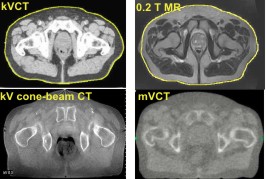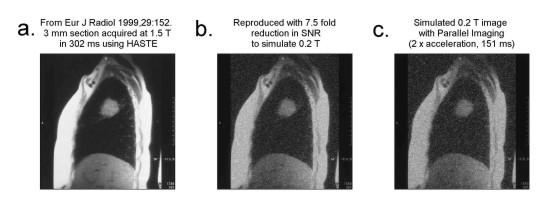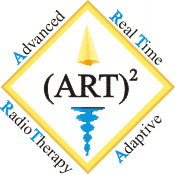The Linac-MR
The Next Generation of Radiotherapy
The Medical Physics Department at the Cross Cancer Institute, Cancer Care Alberta - Alberta Health Services (ACC-AHS) has built a prototype Medical Linear Accelerator (Linac) coupled to a Magnetic Resonance Imaging System (MR or MRI) for real-time guidance of radiotherapy treatments.
This project “Advanced Real Time Adaptive RadioTherapy” (ART)2 is focused on developing the World’s first Image Guided Radiotherapy (IGRT) system that will utilize MR guidance. The goal of (ART)2 is “Seeing, Adapting, Treating”
Background:
Radiotherapy is a proven method of treating and curing cancer. Current radiotherapy machines use X-ray or CT based imaging to verify the position of the tumor prior to treatment. The images provided by MR imaging are far superior to those from CT when trying to distinguish tumors from the soft tissue surrounding them. However, it has always been thought to be impossible to connect a Linac to an MR scanner. The group led by Dr Gino Fallone and Brad Murray hold patents that solve these problems allowing the integration of an MR scanner and a Linac.

Real Time Imaging
Current Image Guidance systems for radiotherapy rely on CT imaging or 2D X-ray imaging. These systems are plagued by two issues.
- The CT scans currently take a couple of minutes to measure and calculate, and after reviewing the images, the patient is re-positioned and treated based on these images. These systems cannot provide any real time feedback during treatment to see if there is any change in position during treatment.
- The X-ray systems are capable of capturing 2D images of the treatment field; however, due to the fundamental physics limitations these “Portal Images” have intrinsically low contrast and have limited usefulness.
There are alternative methods of image guidance where gold seed markers, or active beacons, are permanently implanted into the body. However, these systems do not have the ability to view the size and shape of the tumor to detect any changes. Thus none of the current systems are suited for good image guidance or adaptive therapy.

MR guidance is the solution to the above problems. The implementation being proposed at the Cross Cancer Institute will solve these problems by integrating an MR imaging system along with the linear accelerator. Not only will the system be able to generate high quality 3D images, but it will be able to take streaming images during treatment. This will provide the clinician with 3D MR scans daily, so they can easily quickly and accurately determine if the tumor volume and surrounding structures have changed size and shape thus requiring the plan to be modified or adapted to the new anatomical shape. As well it will allow multiple images to be taken per second, which will be quick enough to track the tumor position in real time during treatment. The radiation beam will be able to follow the motion of the tumor for those cases such as lung tumors where there is significant motion during each treatment.
Project Overview

The Cross Cancer Institute (CCI) has a long standing
project called IGAR
(Image Guided Adaptive Radiotherapy). IGAR has four
pillars, one of which is (ART)2. The
(ART)2 program was initiated in 2005 to
develop the next generation of radiotherapy treatment
machine. AHS-ACB holds the patents (pending) on the
technology necessary to integrate a linear accelerator
to a Magnetic Resonance Imaging system. The first
prototype was built in 2008. This prototype, composed
of a biplanar 0.2 T MR system with a 27 cm square opening
coupled to a 6 MV linac in a custom configuration, was
used for proof of principle. A second, larger machine began
installation in 2013. This is a whole body linac-MR with
an isocentrically mounted 6 MV linac that rotates in-unison
with a biplanar 0.5 T MRI in transverse plane. The opening
is 60 cm. Acceptance testing of the MR component is now complete,
and radiation testing is progressing.
(ART)2 is presently supported by the Alberta Health Services / Cancer Care Alberta and the Alberta Cancer Foundation (ACF).


